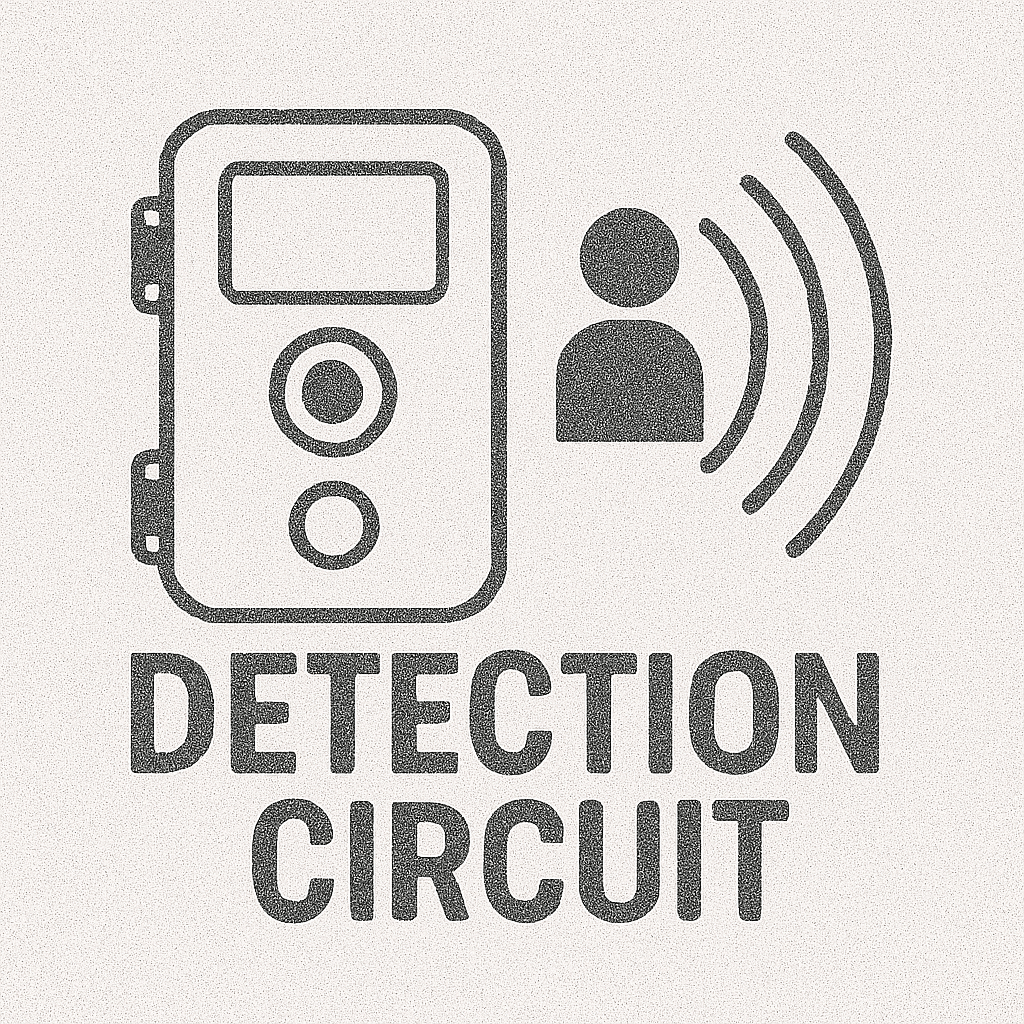Passive Infrared Sensor (PIR) in Trail Cameras
Discover how Passive Infrared Sensors (PIR) enhance trail cameras, enabling motion detection through heat changes and ensuring energy efficiency.
Glossary
The ability of PIR sensors to detect motion near the edges of their detection range, enhancing trail camera performance by capturing side-entry movements.
Peripheral Detection refers to the ability of Passive Infrared (PIR) sensors to detect motion near the edges of their detection range. In the context of trail cameras, it ensures that animals or other subjects entering the camera’s frame from the side are not missed. This feature significantly enhances the effectiveness of trail cameras in capturing wildlife or monitoring outdoor spaces. Below, we provide a comprehensive exploration of peripheral detection, including its functionality, applications, technical aspects, and real-world use cases.
Peripheral detection is a specialized capability of PIR sensors that enables them to sense motion occurring at the outermost boundaries of their detection field. PIR sensors work by detecting variations in infrared radiation (heat energy) emitted by objects, such as animals or humans, within their range.
While PIR sensors are generally optimized for detecting motion directly in front of them, peripheral detection extends this capability to the edges of the sensor’s coverage area. This ensures that no movement is overlooked, even if the subject enters the detection zone from an angle or the side.
Peripheral detection relies on the underlying principles of PIR sensor operation, combined with specific design elements such as Fresnel lenses and sensor configuration. Here’s how it functions:
PIR sensors detect changes in infrared radiation within their field of view. Every object above absolute zero emits infrared radiation, with warmer objects like animals or humans emitting more radiation compared to their surroundings. When an object moves across the sensor’s detection area, it creates a variation in infrared radiation that the sensor detects.
A Fresnel lens is a critical component that enhances the PIR sensor’s detection capabilities. It focuses and segments the detection area into multiple zones (bright and dark regions). When an object moves across these zones, the sensor detects changes in radiation intensity, even at the periphery.
Most PIR sensors use a dual-sensor setup, with two pyroelectric elements configured to detect changes in heat between adjacent zones. This configuration allows the sensor to differentiate between stationary and moving objects, even towards the edges of the detection field.
The sensor’s electronic circuitry processes the detected infrared variations and determines whether the motion exceeds a predefined threshold. If so, the system triggers an event, such as capturing an image or recording a video.
To understand peripheral detection in depth, it’s essential to examine the technical aspects that influence its performance:
| Aspect | Details |
|---|---|
| Detection Angle | Horizontal and vertical range; typically 90° to 120° for trail cameras. |
| Detection Distance | Effective up to 10-25 meters depending on the environment and model. |
| Sensitivity Control | Adjustable sensitivity to reduce false alarms in active environments. |
| Fresnel Lens Design | Concentric rings enhance edge sensitivity and focus light onto the sensor. |
Peripheral detection requires the ability to distinguish between genuine motion (e.g., an animal moving) and environmental noise (e.g., swaying branches or heat waves). Advanced signal processing algorithms help minimize false triggers.
Factors like temperature fluctuations, direct sunlight, or nearby heat sources can affect peripheral detection. Proper placement of the trail camera and the use of anti-interference features can mitigate these issues.
Peripheral detection enhances the functionality of trail cameras in various scenarios. Below are some common applications:
A biologist studying nocturnal animals places a trail camera in a dense forest. Thanks to peripheral detection, the camera captures a rare species entering the frame from the side, providing valuable data for the study.
A hunter sets up a trail camera along a game trail. Peripheral detection ensures that even deer approaching from the side are detected and photographed, improving scouting efficiency.
A homeowner installs a trail camera with peripheral detection near their backyard. The camera captures footage of a trespasser entering from the side, providing evidence for law enforcement.
Peripheral detection is an advanced capability in PIR sensors that significantly enhances the effectiveness of trail cameras. By understanding its functionality, optimizing its parameters, and placing cameras strategically, users can achieve comprehensive monitoring and precise detection across various applications, from wildlife observation to property security.
Discover trail cameras equipped with advanced PIR sensors and peripheral detection capabilities for comprehensive monitoring.
Peripheral detection refers to the ability of PIR sensors to detect motion near the edges of their detection range, ensuring subjects entering from the side are captured.
Peripheral detection utilizes Fresnel lenses, dual-sensor designs, and advanced signal processing to detect motion at the boundaries of the detection range.
Peripheral detection ensures no movement is missed, capturing subjects entering from the edges of the frame, which is essential for wildlife monitoring and security.
Peripheral detection enhances motion detection coverage, improves wildlife tracking, and reduces missed captures in trail cameras.
Optimize peripheral detection by positioning the camera strategically, adjusting PIR sensitivity settings, and using cameras with advanced Fresnel lenses and PIR sensors.
Discover how Passive Infrared Sensors (PIR) enhance trail cameras, enabling motion detection through heat changes and ensuring energy efficiency.

Explore the intricacies of trail camera detection circuits, including their components, technical specifications, and applications in wildlife monitoring, security, and hunting.
Discover how PIR sensors work, their applications in security cameras, trail cameras, and smart devices, and how they compare to other motion detection technologies.